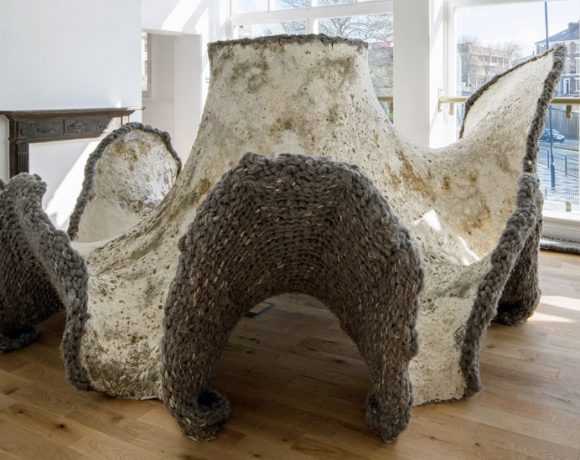
The Farrell Centre, a new architecture center in Newcastle that was partly funded by architect Sir Terry Farrell, is set to open with an exhibition showcasing innovative ways to reduce cities’ environmental impact. One of the exhibits features a structure made from mycelium, the root network of fungus, which has been grown on a knitted canopy made from sawdust and paper waste.
This approach creates walls that are strong, light, self-repairing, and fully compostable. The exhibition also includes visions from four architecture studios on how to make buildings more sustainable. The center cost £4.6 million to set up.
According to the director of the Farrell Centre, Owen Hopkins, the use of mycelium in building construction is quite different from the traditional approach that relies on concrete, steel, and glass. Buildings and construction contribute to around 40% of global carbon dioxide emissions, making it a significant contributor to climate change.
The Farrell Centre, which is part of Newcastle University, has created an exhibit showcasing a “living room” made from mycelium. Although mycelium is not yet a material that can be used in conventional building construction, it is not far off, says Mr Hopkins. The material has the ability to self-repair, making it a promising material for future construction. However, this new approach challenges the traditional idea of architecture as something that is finished and fixed.
The More With Less exhibition at the Farrell Centre includes innovative ideas for using insulation and common low-cost materials to make buildings more environmentally friendly. Despite being part of the problem, architecture and planning have the potential to be powerful solutions to climate change.
The exhibition also focuses on the impact of buildings on life in north-east England and how they can be improved. Sir Terry Farrell, who helped regenerate Newcastle’s quayside in the 1990s and designed landmarks such as the Centre For Life and the MI6 building in London, was instrumental in setting up the center. He also conducted the Farrell Review of Architecture and the Built Environment for the UK government in 2014.
Picture Courtesy: Google/images are subject to copyright
